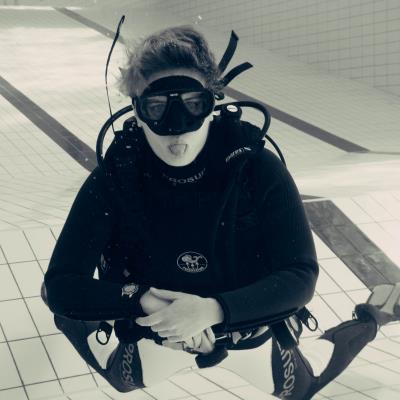Psammon - It's not just sand
Sandy bottoms are characteristic for bays and coastal lowlands. Generally they are found where currents and waves are strong and lead to a washing out of fine clay and silt particles and organic which are then spilt away. However, granular material settles down and deposits. The sands we find in shallow water are relatively coarse, with increasing depth, sediments become also finer and the proportion of deposited organic material inceases. The character of the sandy bottom is determined by the water movement, as currents and the surf of waves leaches out the fine, organic particles and leaves the coarser sand grains. When the organic portion exceeds the anorganic sand portion, it is no longer a sandy but a soft bottom. Another important factor is the oxygen content within the sediment which leads to a stratification. Below a surface layer of just a few centimeters, this habitat is characetized by hypoxia or even anoxic conditions. Species, living in this habitat therefore have to adapt to extreme living conditions. At first sight, sandy bottoms do not offer sufficient shelter and lairs or available food resources. Sessile animals are forced to camouflage themselves and dig into the ground to live protected. In order to get food, different strategies were evolved: Irregular sea urchins (such as heart urchins, Spatangoida) ‘suck’ bacteria and algae from the sand grains, the golden anemone (Condylactis aurantiaca) captures plankton with its tentacles, bivalves are using siphones to siphon particles from the sand surface and ambush predators such as the spotted weever (Trachinus aranaeus) and the Atlantic stargazer (Uranoscopus scaber) bury themselves into the ground and catch their passing prey. Organisms, living permanently dug in the sand have to cope with the low oxygen conditions and have to ensure a permanent availabitly of fresh water. Bivalves, for example, to so by using their siphones, irregular sea urchins build a chimney by using specialized longer and softer spines, the sea mouse (Aphrodita aculeata) a marine polychaete worm and some snails come back to the surface once in a while. Main groups which are discussed during this day are: Bivalves (e.g. Callista chione and Chamelea gallina), Gastropos (e.g. Haustellum brandaris, Hexaplex trunculus and Natricarius hebraeus) and Polychaetes (e.g. Aphrodita aculeata).


Load more comments